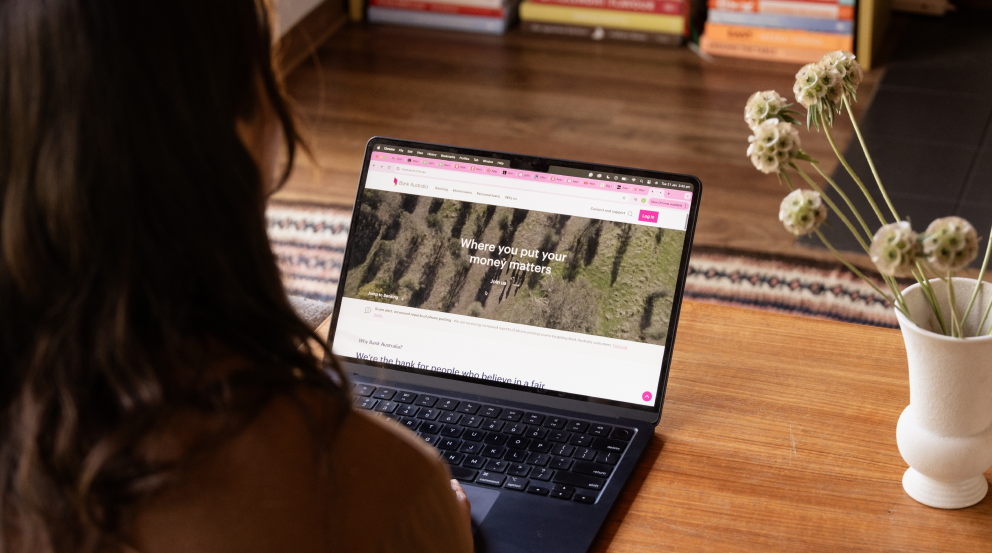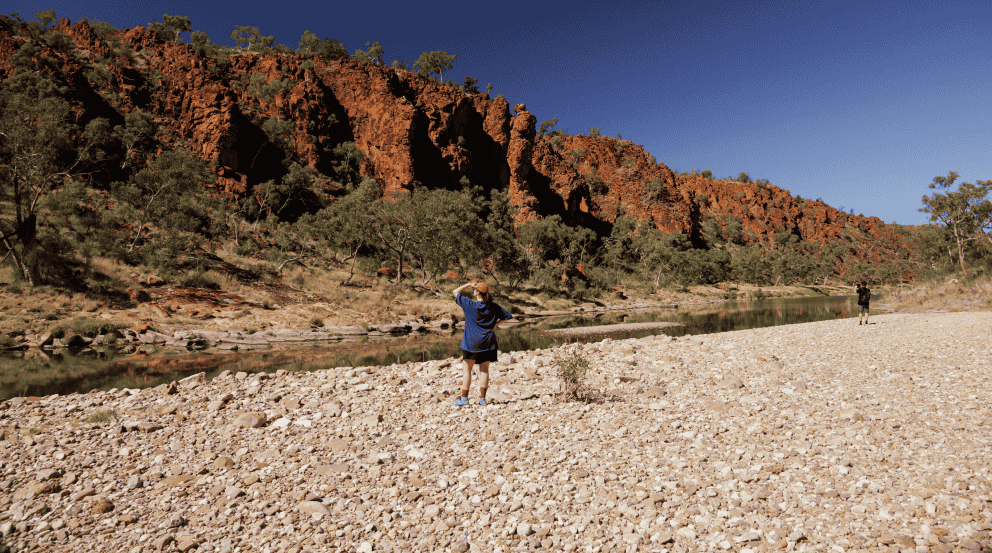Think scams only happen to other people? Sadly, scam activity is at an all-time high and anyone can be tricked by a scammer. Here, Bank Australia team member Ellie shares her story of almost getting swindled out of $500.
When Ellie put her old iPhone onto Facebook Marketplace, the interest reassured her that she’d be able to sell it without any problems. She had two messages almost immediately – one from a Facebook user asking if she could send it to New York for an extra $100, and one from an Instagram account who lived in New South Wales.
She told the first guy she couldn’t send the phone to New York, but when the second message came through, with the offer to pay for postage to New South Wales, Ellie agreed. She shared her PayPal details, and received an email a few minutes later informing her that money had been received into her account. But there was nothing there.
This was when the first alarm bell sounded for Ellie. According to the email, which looked genuine, the money that had been deposited into her account couldn’t be transferred to her bank account because it was over her limit. The email said that, in order for funds to be released, the buyer would need to deposit another $500 so her account could be upgraded to a business account.

“I messaged the guy and he said ‘I received the same email’,” Ellie recalls, offering to refund his money and start again. But a few minutes later, she got another message from him, saying that he’d transferred another $500, and a message from PayPal saying that her account had been upgraded and her funds could be released. But there was still no money in either her bank or PayPal account.
That’s when Ellie realised she was being scammed. “This guy said that I’d need to transfer money out of my bank account into my PayPal account in order to refund his $500,” she says. “Then I checked the email address these PayPal messages were coming from and saw they were being sent from a Gmail account.”
As soon as Ellie figured out what was going on, she reported and blocked him, and that was the last she heard from him.
Ellie was lucky. With internet and phone scams becoming more and more complex, particularly those that play on people’s emotions, it’s no wonder people are falling for it. “There are all of these emotional conversations, like someone’s missing their daughter and they want to send this phone to her in New York in time for her birthday… I avoided losing any money, but this could easily happen to someone with a loving heart who would just say ‘I’ll do that for you’,” Ellie says.
“For some people, $500 is nothing. People just think ‘I’ll send the money and then I’ll get it back’,” Ellie says. “But everything has a value. Even $1.”
.webp)
Recognising red flags for scams
After working with Bank Australia for just over three years, Ellie believes that her role at the bank has made her more savvy to potential scams. “I knew that I needed to check the email address,” she says. “Anything coming from a Gmail or Yahoo account is definitely a scam.”
She was also keen to share her story, so that others know what to look out for. “We shouldn’t assume scams are things that only happen to other people,” she says. “I’m watchful and I know what’s going on, I know what to look out for. But it still almost happened to me.”
Most people don’t learn about scams until it’s too late
Scammers are getting more and more sophisticated. Some operate as professionalised businesses, with official-sounding call centres and clever fake web addresses. The best way to protect yourself and your accounts is to learn about common scams and red flags. And remember to share with family and friends to help them, too. Scamwatch is a great government resource for this kind of education.
If you’re worried that you may have been caught in a scam, contact us immediately – we’re here to do all we can to help. You can find out more about online scams here.
%2520(1).webp)





LiamNeal-04638.webp)
LiamNeal-04722-751x494-322a97a.webp)
